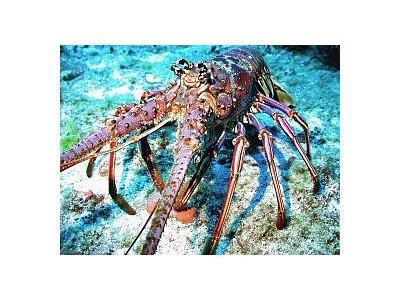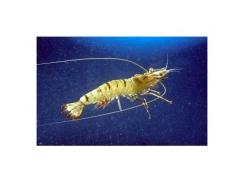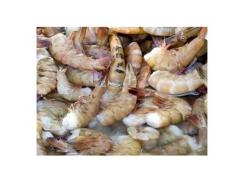Caribbean Spiny Lobsters Found to Get Food From an Unexpected Source

UK - Researchers from the UK's University of Plymouth have found that chemosynthesis plays an unexpectedly essential role in supporting populations of the lucrative Caribbean spiny lobster in shallow waters.
The researchers show that lucinid clams, which get their food from chemosynthetic bacteria living in their gills, account for 20 per cent of the lobster's diet. The findings offer the first empirical evidence that chemosynthetic primary production contributes to the productivity of an important commercial fishery, generating more than US$450 million per year.
"We found that Caribbean spiny lobsters are getting a large proportion of their food from one particular clam species, the tiger lucine, which are unusual because they make their own food with the help of chemosynthetic bacteria living in their gills," says Nicholas Higgs from the University of Plymouth.
"This chemosynthetic food source represents an alternative food pathway to the traditional photosynthesis-based food chain. By tapping into this food source, the lobsters are taking advantage of extra food that few other predators seem to be able to access, which helps explain the high productivity of the lobster fishery."
Chemosynthesis had been thought to be important primarily in deep-sea environments where the sun doesn't shine. More recently, it became clear that lucinid clams are also abundant in shallow seagrass ecosystems. But their role in the larger food web wasn't clear.
In the new study, Mr Higgs and colleagues monitored spiny lobsters at ten locations across the Great Bahama Bank, an area highly frequented by lobster fisherman. On multiple occasions, they caught spiny lobsters in action, munching on lucinid clams.
Stable isotope analyses of the lobsters' tissues indicate that the animals obtain about one-fifth of their diet from the clams. In some populations, that figure almost doubled. The discovery shows that a major portion of the lobster's diet consists of clams that get their food from chemical energy.
"Although chemosynthetic organisms were known to inhabit certain shallow ecosystems like seagrass beds and mangrove swamps, they were thought to be 'dead ends' in the food chain or pretty minor at best," Mr Higgs says.
"It shouldn't have been a surprise because they can be some of the most abundant animals in seagrass beds, but they often live deep down in the sediment so people thought that they were generally inaccessible. It was pretty surprising to find that they help support a major economically important fishery species."
The discovery helps to explain the high productivity of the Caribbean spiny lobster fishery and the seagrass environments they live in. It shows that seagrass habitats and chemosynthetic productivity should be considered in conservation and environmental management going forward. The researchers estimate that chemosynthesis is worth over US$17 million in lobster production to the Bahamas fishery alone.
It might turn out that chemosynthetic organisms are an important source of food to spiny lobster species around the world, a possibility that Mr Higgs hopes now to explore. He is also curious to learn what other animals eat the clams.
"We are just beginning to scratch the surface of understanding just how important these alternative forms of food production are in marine and freshwater ecosystems," Mr Higgs says.
Related news
Tools

Phối trộn thức ăn chăn nuôi

Pha dung dịch thủy canh

Định mức cho tôm ăn

Phối trộn phân bón NPK

Xác định tỷ lệ tôm sống

Chuyển đổi đơn vị phân bón

Xác định công suất sục khí

Chuyển đổi đơn vị tôm

Tính diện tích nhà kính

Tính thể tích ao




 Chinese Investors Eye $200 million Russian Seafood Aquaculture…
Chinese Investors Eye $200 million Russian Seafood Aquaculture…  Western Australia Implements Import Restrictions on Queensland Prawns…
Western Australia Implements Import Restrictions on Queensland Prawns…